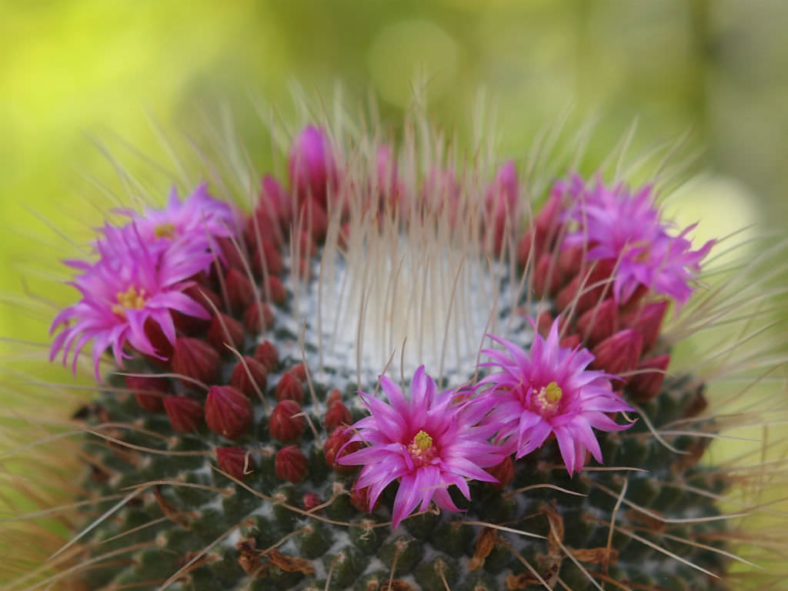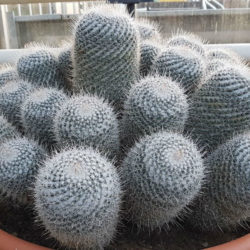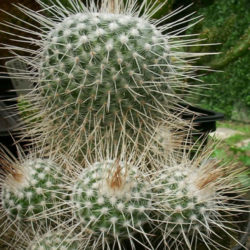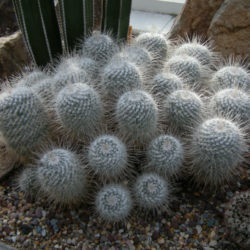Scientific Name
Mammillaria geminispina Haw.
Common Name(s)
Twin-spined Cactus, White Cactus, Whitey
Synonym(s)
Mammillaria geminispina subsp. geminispina, Neomammillaria geminispina
Scientific Classification
Family: Cactaceae
Subfamily: Cactoideae
Tribe: Cacteae
Subtribe: Cactinae
Genus: Mammillaria
Description
Mammillaria geminispina is a small cactus with spherical to cylindrical or club-shaped stems covered with spirally arranged tubercles with areoles and clusters of spines at the tips and white wool and 10 to 20 long bristles in their axils. The stems can grow up to 7.2 inches (18 cm) tall and 3.2 inches (8 cm) in diameter and produce offsets, forming a clump up to 3 feet (90 cm) in diameter. The spines are pretty stiff, white-colored, some with light-brown tips. Each areole bears 16 to 20 radial spines measuring 0.3 inches (0.7 cm) long and 2 to 6 central spines measuring 1.6 inches (4 cm) long.
In spring, deep pink to magenta flowers appear around the top of each stem, forming incomplete rings. The flowers are occasionally scattered across the entire stem. They can reach up to 0.6 inches (1.5 cm) in length and diameter. It can take 7 to 8 years before flowering. The fruits are carmine red and contain brown seeds.
Mammillaria geminispina has gained the Royal Horticultural Society's Award of Garden Merit.
Origin
Mammillaria geminispina is native to central Mexico. It occurs in Hidalgo, Queretaro, and San Luis Potosi at elevations ranging from 3,280 to 6,070 feet (1,000 to 1,850 m).

Hardiness
USDA hardiness zone 9b to 11b: from 25 °F (−3.9 °C) to 50 °F (+10 °C).
How to Grow and Care
To encourage better flowering, allow the plants to enjoy a cooling period in the winter and suspend watering. Unlike many other cacti, which use their ribs as storage devices, the Mammillaria feature raised tubercles, from which spines emerge. When you water, the tubercles will expand to allow for increased water storage. The flowers emerge from the axils of these tubercles on the previous year's growth, which accounts for their interesting halo effect. The cactus mustn't be exposed to prolonged dampness and sitting water. Never let your cactus sit in a dish of water. Lastly, make sure to fertilize during the growing season for the best results.
Repot as needed, preferably during the warm season. To repot a cactus, make sure the soil is dry before repotting, then gently remove the pot. Next, knock away the old soil from the roots, making sure to remove any rotted or dead roots in the process.
See more at How to Grow and Care for Mammillaria.
Links
- Back to genus Mammillaria
- Succupedia: Browse succulents by Scientific Name, Common Name, Genus, Family, USDA Hardiness Zone, Origin, or cacti by Genus
Photo Gallery
Click on a photo to see a larger version.


